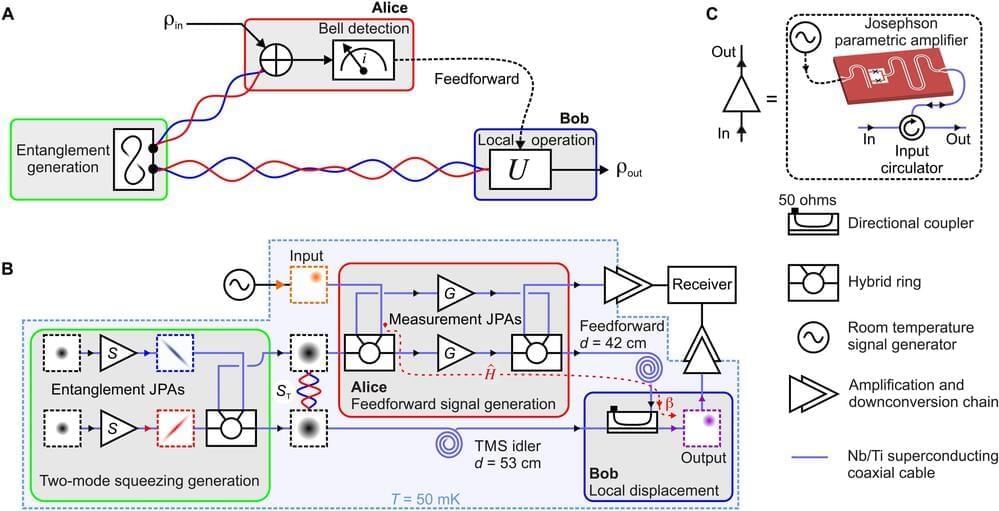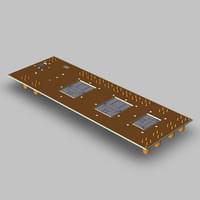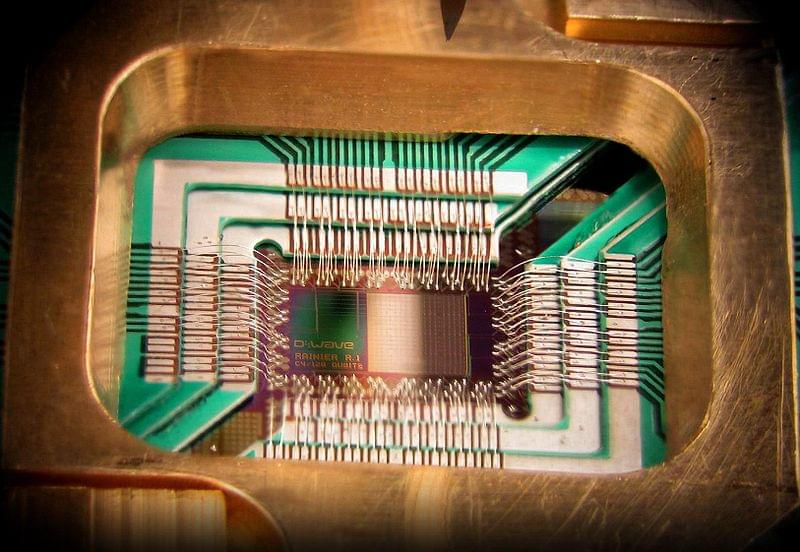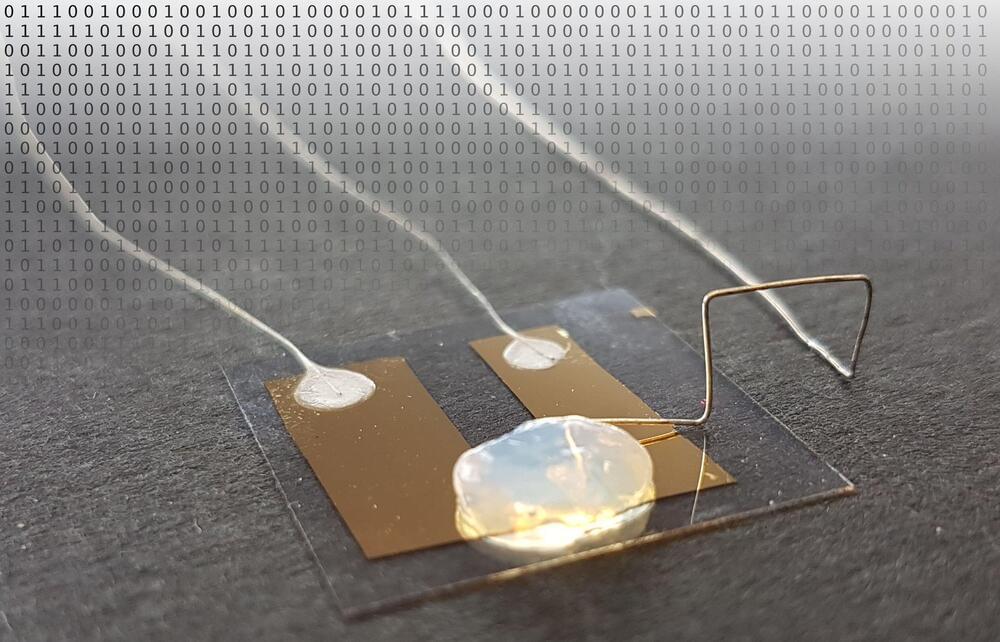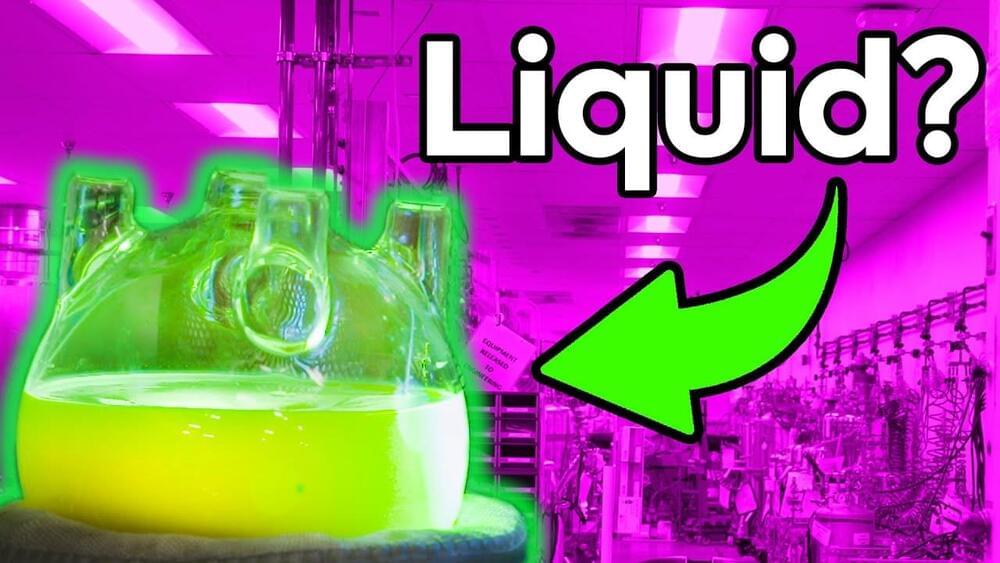Jan 5, 2022
Experimental quantum teleportation of propagating microwaves
Posted by Saúl Morales Rodriguéz in categories: quantum physics, security
The field of experimental quantum communication promises ways of efficient and unconditional secure information exchange in quantum states. The possibility of transferring quantum information forms a cornerstone of the emerging field of quantum communication and quantum computation. Recent breakthroughs in quantum computation with superconducting circuits trigger a demand for quantum communication channels between superconducting processors separated in space at microwave length frequencies. To pursue this goal, Kirill G. Fedorov, and a team of scientists in Germany, Finland and Japan demonstrated unconditional quantum teleportation to propagate coherent microwave states by exploring two-mode squeezing and analog feedforward across a distance of 0.42 m. The researchers achieved a teleportation fidelity of F= 0.689±0.004, which exceeded the asymptotic no-cloning threshold, preventing the use of classical error correction methods on quantum states. The quantum state of the teleported state was preserved to open the avenue towards unconditional security in microwave quantum communication.
Quantum teleportation (QT).
The promise of quantum communication is based on the delivery of efficient and unconditionally secure ways to exchange information by exploring the quantum laws of physics. Quantum teleportation (QT) is an exemplary protocol that stands out to allow the disembodied and safe transfer of unknown quantum states using quantum entanglement and classical communication as resources. Recent progress in quantum computation with superconducting circuits has led to quantum communication between spatially separated superconducting processes functioning at microwave length frequencies. Methods to achieve this communication task includes the propagation of two-mode squeezed (TMS) microwaves to entangle remote qubits and teleport microwave states to interface between remote superconducting systems. Fedorov et al. demonstrated the deterministic QT of coherent microwave states by exploring two-mode squeezing and analog feedforward across a distance of 0.
